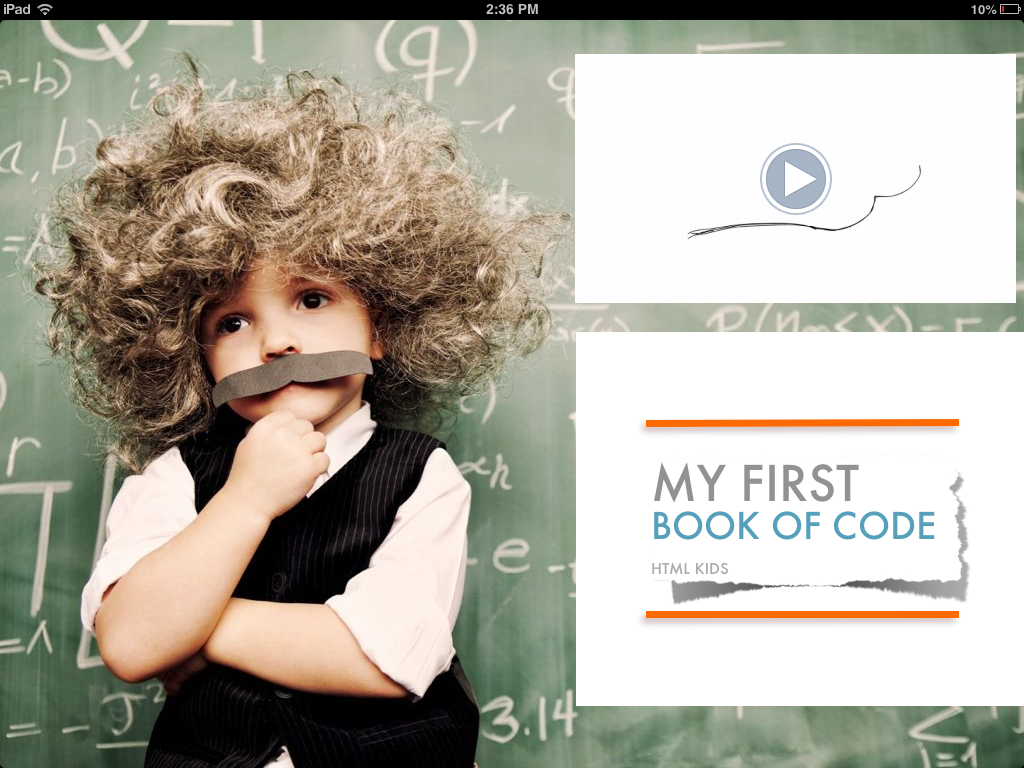How To Be a Coder
Can you really teach a toddler to code? Well, it all depends on how you define the word code. What is coding? What skills do you need in order to learn to code? What if I don’t allow my children to have screen time, does that mean they can’t learn to code?
In this article I’m going to contrast two resources that introduce coding to children from drastically different avenues, but both do it in a fun and engaging way. Both are easily accessible for children as young as two or three but also have the potential to hold the attention of a much older child.
My First Book of Code
My First Book of Code is an iBook. This book is available on iTunes for $2.99. (Unfortunately this title is not currently available. The author tells me it is being updated and released under the same SBN number.)
My First Book of Code of course requires the use of a screen. I have it downloaded onto our iPad. If you are already using iPad apps or iBooks with your tot, then this will be a familiar format for them.
My First Book of Code approaches learning to code through literacy – by introducing HYML tags into a child’s world of visual language. Children often learn to ‘read’ environmental text long before they are able to decode words on a page. They recognize signs, store logos, toy names and movie titles using letter, shape and color recognition. By displaying HTML tags in large fonts and bold bright colors I think Pydiah is doing just that – disarming the mix of words, symbols and abbreviations that make attempting to ‘read’ code disconcerting to non-coders. Interact with the book enough times and that strange mix of text and symbols doesn’t look so foreign.
One of the most successful design elements of My First Book of Code is the metaphor it introduces between the structure of code and the human body. Young children are very familiar with the body and by this time have mastered the names of its parts. There is a humor set up here – “our code person also has a head and body and parts that make it work”. Older children quickly understand the correlation between part and function. Learning something new is much easier when you can compare it to something you know already. On the other hand, unless the person reading this book with the child is familiar with at least basic HTML elements (like knowing that <li> means list item) then the value of the HTML environmental text will diminish.
If you are interested in reading more about the interactivity of the book and looking at screen shots you can read my full review .
Beyond the familiarity with the way code looks, older children can quickly begin to see how HTML elements in My First Book of Code are stacked like building blocks in order to make something. Each page has a small pop rocket that reveals the code snippet for that particular element and the content being used to create the code ‘person’. They can type these code snippets letter by letter into something like notepad and save it as an html file which will open up in your web browser. (Many of you may have done something very similar with Basic in DOS when you were children.) The last page of the book can be used as a guide for structuring the code. For a simpler start it can even be copied and pasted into notepad without doing any typing.
Of course this is well beyond the capacity of your toddler, but elementary aged children can manage this with a little help. As soon as they see what they have created they will immediately try to change it. Easy changes would be to change a color or add more food for the stomach. Inevitably they will break the code and learn about formatting and just how limited a computer’s vocabulary really is. Maybe they will figure out how to fix it, maybe they will need help. Regardless, they have just moved from expanding and exercising code literacy into logic and problem solving. Hopefully the next step will be to try something new all on their own.
Primo by Brain Cube
A toy with a whole new approach for learning to code is the prototype for a toy called Primo. Primo is “a playful coding interface for children, designed to teach basic programming logic without the need for literacy”.
If you limit your child’s interaction with screens, but are still interested in facilitating learning to code you may sign up for Primo’s newsletter to be notified when they launch their Kickstarter campaign. (Update: Primo has launched on Kickstarter!) The aesthetic of Primo is perfect for families who seek out natural toys or are interested in untoys. If that is not important to you, there are other similar plastic toys that approach coding from a logic and problem solving that are already on the market. Try looking at a company called Terrapin. Maybe you have a Big Trak in the attic somewhere? We have a Pinterest board set up to collect toys that encourage programming skills.
If you have another resource that you have found successful at teaching young children skills that facilitate learning to code share them by leaving a comment.
